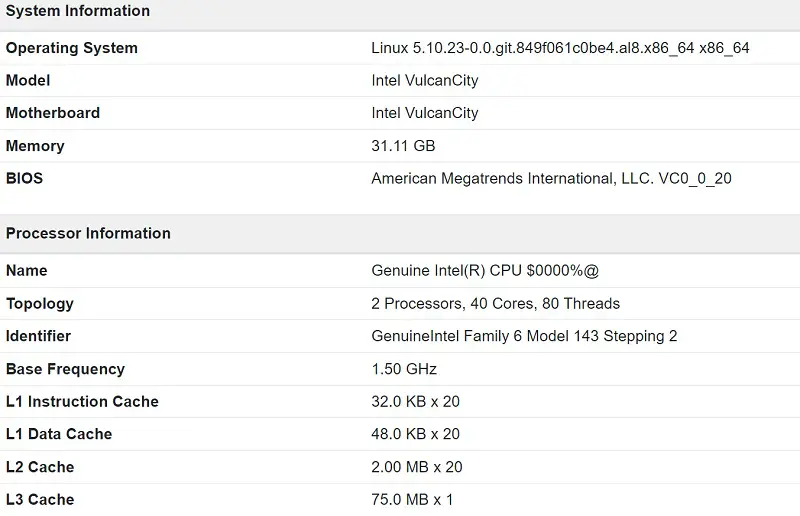Intel’s fourth-generation Xeon Scalable processor Sapphire Rapids will debut in the second half of 2021. Earlier news has confirmed that this processor will be manufactured using the 10nm Enhanced SuperFin process, and the core uses the Golden Cove architecture. It also supports PCIe Gen5, CXL 1.1 (Compute Express Link), and eight-channel DDR5 memory, and will continue Intel’s built-in AI acceleration strategy, support Intel Advanced Matrix Extension (AMX), and even launch a version equipped with HBM memory.
Recently this processor has appeared in
Geekbench. The data shows that the test is a dual-socket CPU platform, equipped with two Sapphire Rapids processors with 20 cores and 40 threads. The platform has a total of 40 cores and 80 threads. Although the basic frequency displayed is 1.5 GHz, the actual test report shows that the frequency is about 4.7 GHz when it is running. It is not clear whether Geekbench reads the information incorrectly or the actual operating speed. The Sapphire Rapids processor is worthy of attention because it is likely to appear on the consumer HEDT platform in the future.

In fact, the Sapphire Rapids processor cannot be directly recognized in Geekbench, but the “Identifier” shows the CPU series. It can be understood that it is Family 6 Model 143 Stepping 2, which corresponds to the Sapphire Rapids processor. The processor was tested on the Intel platform code-named “VulcanCity”, and it was configured with 32GB of memory (most likely DDR5), but Geekbench could not read the memory frequency information. In addition, I learned from Geekbench that this Sapphire Rapids processor has 40MB of L2 cache and 75MB of L3 cache.

The test results of this processor are not very good. Ryzen 9 5950X easily surpasses it in multi-core performance, and its single-core performance is also quite bad. Most of the processors introduced in the past 5 years are worse than it, or even inferior to many mobile processors. Obviously, this Sapphire Rapids processor is not running at full speed.







